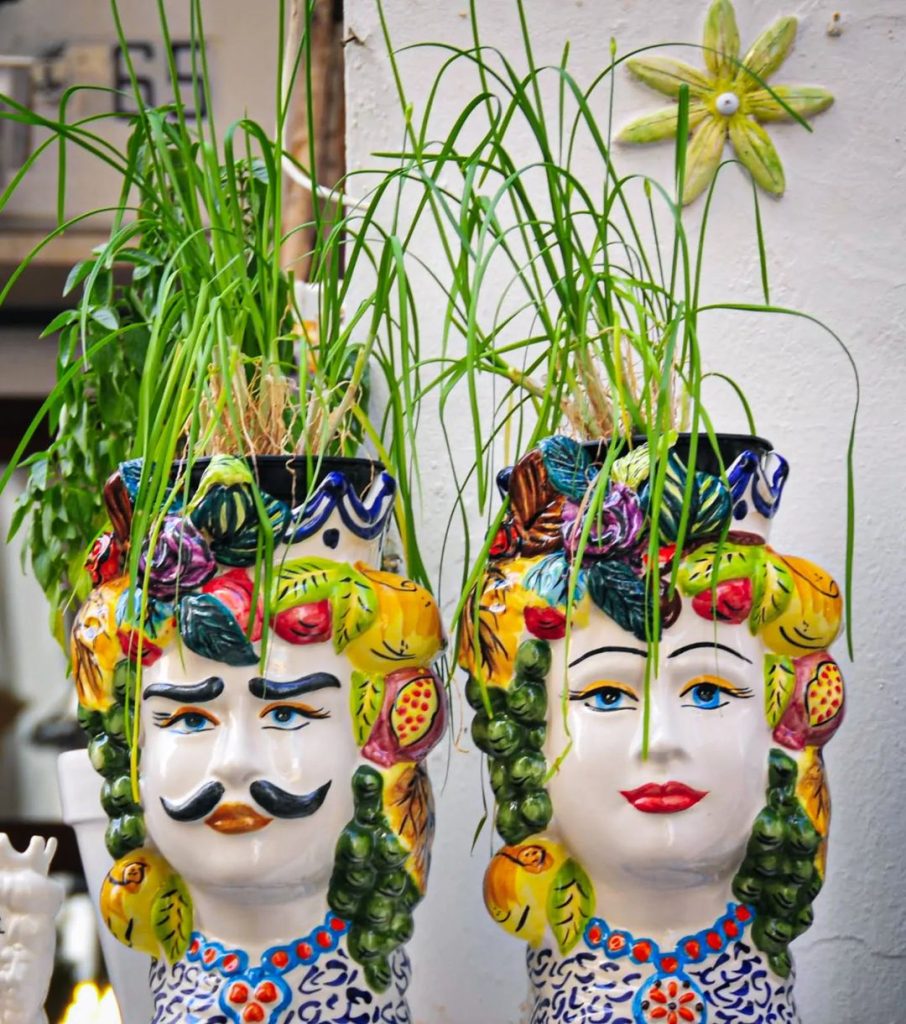Teste di Moro

“An Unfaithful love”
Teste di Moro, also known as “Moorish heads,” are small ceramic or terracotta sculptures depicting the heads of African men or women with colorful turbans or head wraps. They are traditional decorative items in Sicilian folklore and are often used as garden ornaments, hanging ornaments, or even as door knockers.
The story of the Moorish Sicilian heads is a historical tale that dates back to the 11th century. At that time, the island of Sicily was under Arab rule, and it was a thriving center of trade, culture, and architecture. The Moors, who were originally from North Africa and South Spain had established a powerful kingdom on the island and were ruling over the local population.
An ancient legend tells there lived in the Kalsa district of Palermo “a beautiful maiden with rosy skin comparable to peach blossoms and a beautiful pair of eyes that seemed to reflect the beautiful gulf of Palermo.”
The girl was almost always at home, spending her days tending the plants on her balcony. One day a young Moor happened to be passing by, and as soon as he saw her, he immediately fell in love with her and decided to have her at all costs. So without delay he entered the girl’s house and immediately declared his love for her. The maiden, struck by so much ardor, returned the young Moor’s love, but soon her happiness vanished as soon as she learned that her beloved would soon leave her to return to the East, back home with a family and a wife.
The maiden waited for the night and as soon as the Moor fell asleep she killed him and then cut off his head in revenge.
Of the Moor’s head she made a vase of it where she planted basil and put it on display outside in the balcony. The Moor, in this way, being unable to leave would remain with her forever. In the meantime the basil grew luxuriant and aroused the envy of all the inhabitants of the neighborhood who, not to be outdone, had terracotta pots specially made in the shape of the Moor’s Head.



